I spend weeks at a time thinking, I must write a post for my blog, but I never seem to manage to get around to actually doing it. Until I see a good Seville blog, which makes me think I must get my arse in gear. First it was the excellent Sevilla Tapas, and then this new discovery, Becoming Sevillana. Once I saw it, I knew I had to finally get down to work.
So today I went to see the Antiquarium, the archaeological remains in Seville's Plaza de Encarnacion, which were uncovered when the area was being excavated to build a car park. Now they've got the city's most controversial new architectural project on top of them: Metropol Parasol, popularly known as the Setas (Mushrooms). The first part of this new 120-million-euro, er, development – the market - opened back in December. Spotlessly clean, it has the usual fruit'n'veg, fish and meat stalls, as well as a cafe.
You see this curvy, blobby logo around a lot, incorporated into the design of staircases, brochures and the like.
The setas are massive round structures, made of latticed wood. Here you can get one view of them – being a fluid structure, there's a different view from every angle.
They are almost universally hated in Seville, inspiring extraordinary levels of vitriol in citizens, largely due to their economic profligacy, when many people can't even pay their mortgage.
They have a circular restaurant on top of them, see below, and will also have a concert space – the idea is to provide shade for Seville's scorchio summers, and an area for people to meet, and hang out.
So now you've seen them, here's the interesting part – then we'll get to the Antiquarium. The architect who showed us round the archaeological/building site (it's a bizarre combination of the two), an enthusiastic and helpful chap called Raul, told me that the Setas are being inaugurated on 17 April, Domingo de Ramos (Palm Sunday), the first day of Semana Santa, Holy Week. Apparently, the last wooden beam was put into place today, and now all (all!) that remains is for the scaffolding to be removed. Sevillanos will be able to pass final judgement on this most unpopular of buildings.
Before that, on 1 April, the Museo Arqueologico Antiquarium, will be opening. For now, you can get a free sneak preview. Put your name down on the list, and when your appointed time comes (slots are every 30 minutes), put on your safety helmet and yellow waistcoat, dodge the engineers and builders, and follow the friendly architect into the building site.
He explains that this is still the Obra del Antiquario, ie a work in progress. He points out some Roman fish salting vats, called salazones in Spanish. Apparently they're twice the size of others found in Spain, such as those at Baelo Claudia (which I visited last weekend and will blog about shortly. Maybe.) Of course – everything in Seville is bigger and better than everywhere else. Here they are – they date from 150BC. The Roman city was called Hispalis.
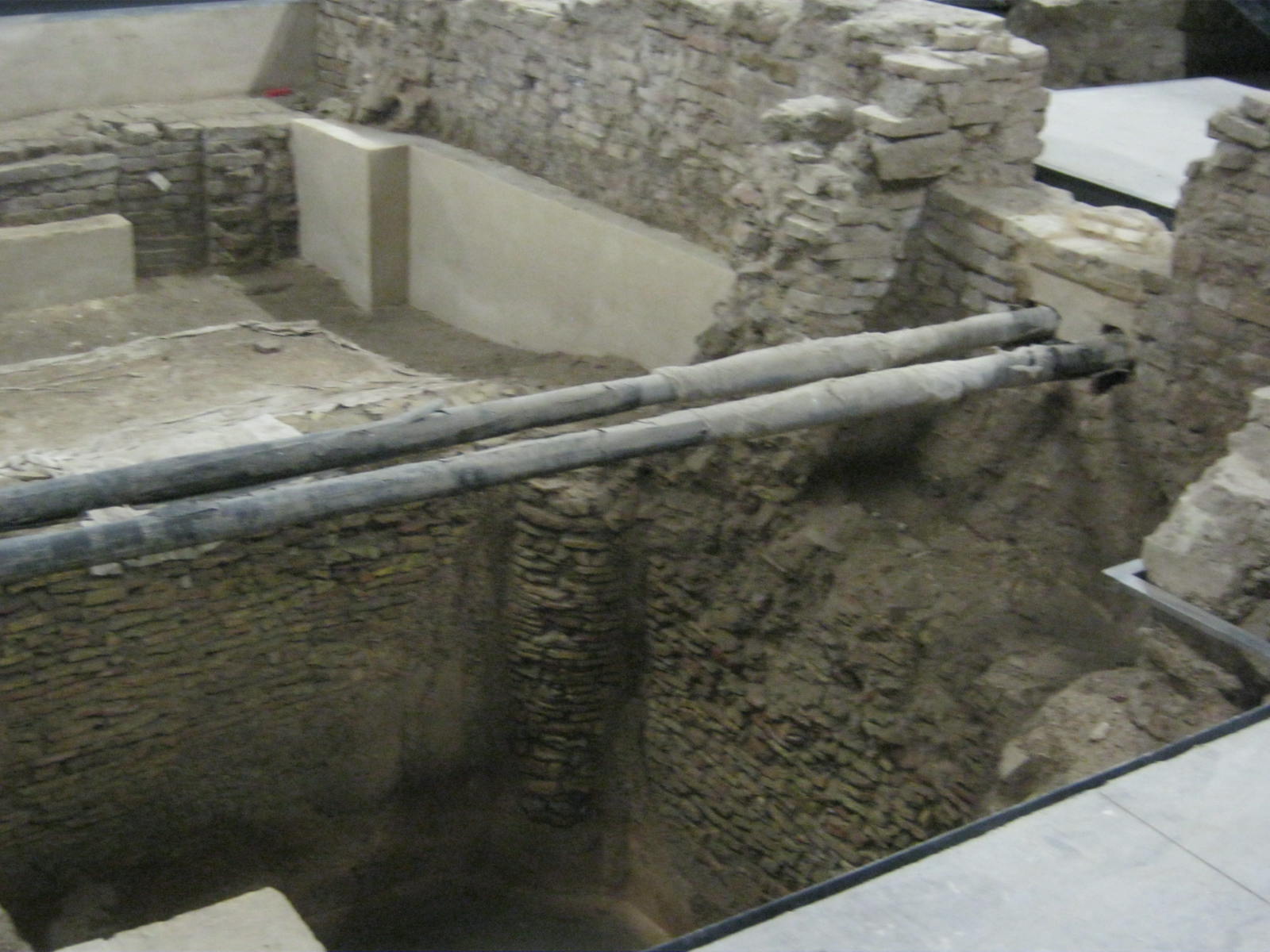
Then we're shown (from a distance) later areas, dating from the 2nd century AD onwards. The mosaics, which you'll be able to see once the museum opens, are very well-preserved – almost intact – and feature unusual colours such as blue and red, made from minerals mined in Rio Tinto and Aznalcollar. A Chrismon symbol was also found in one of the houses - the letters XP, signifying Christian.
The last structure is from the Moorish city, Isbylia, and is a 12th-century house – you can see some walls here; also visible are chimneys where their hot and cold air flow system worked, an early version of bioclimatic architecture, as our guide explained.
All of these houses will be visible along with the household goods found inside them, and you'll be able to see them from a walkway. It will have dramatic motion-sensor lighting, to help distract from the fact that you're in a basement, with glass walls.
So there you have it: a modern urban landmark, by German architect Jurgen Mayer, with an ancient urban cityscape (the part in red in the side view, below) nestled beneath it.
Here are some videos of Metropol Parasol:
Promotional video, with speeded-up construction sequence.
http://www.youtube.com/e/6w1RfFfZLn0
Video of visit to Metropol Parasol (including views from top).
http://www.youtube.com/e/NKuKbmmXEdQ
Virtal reality view of Metropol Parasol.
http://www.youtube.com/e/gBm5UUWrKG4

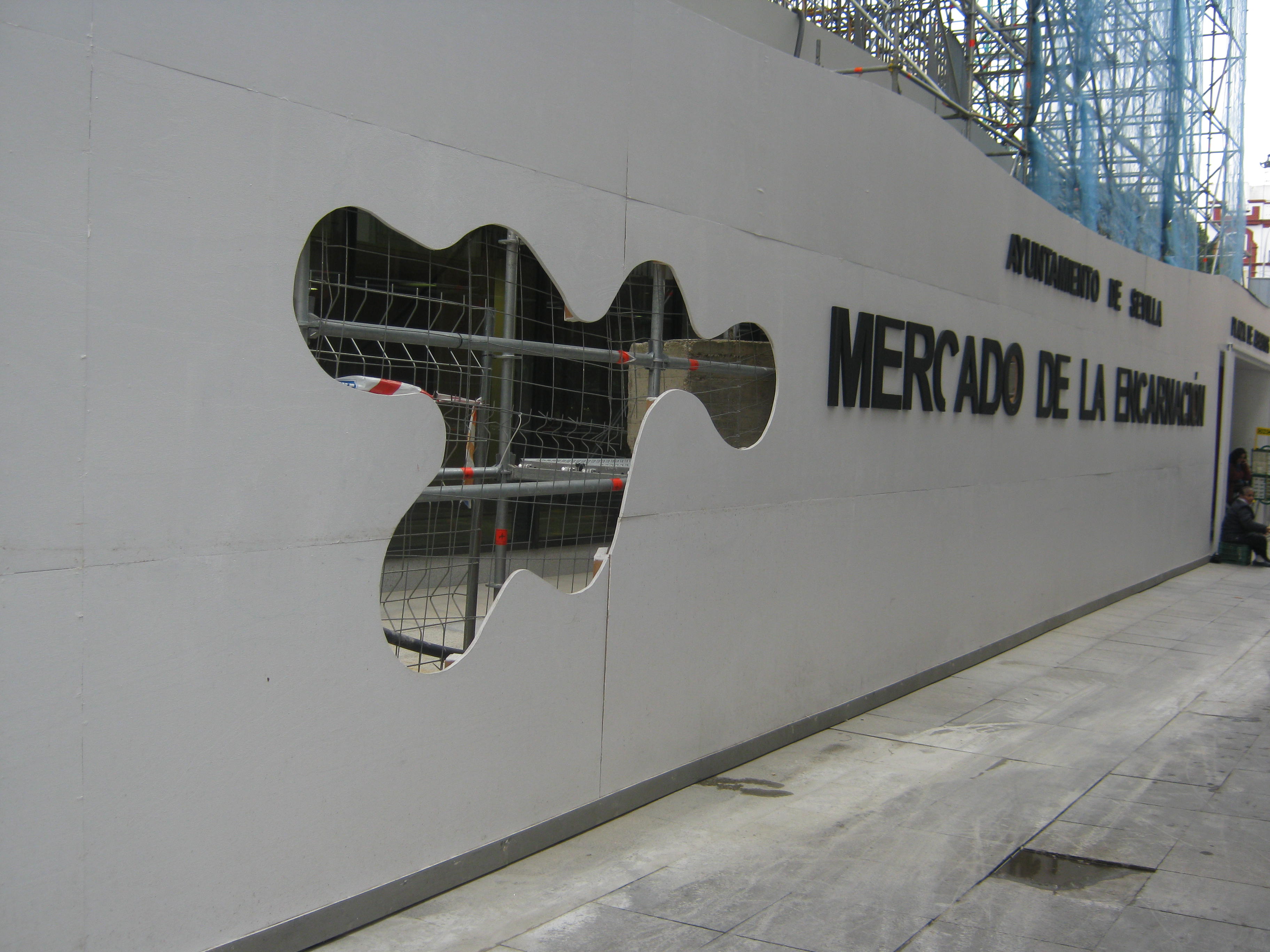
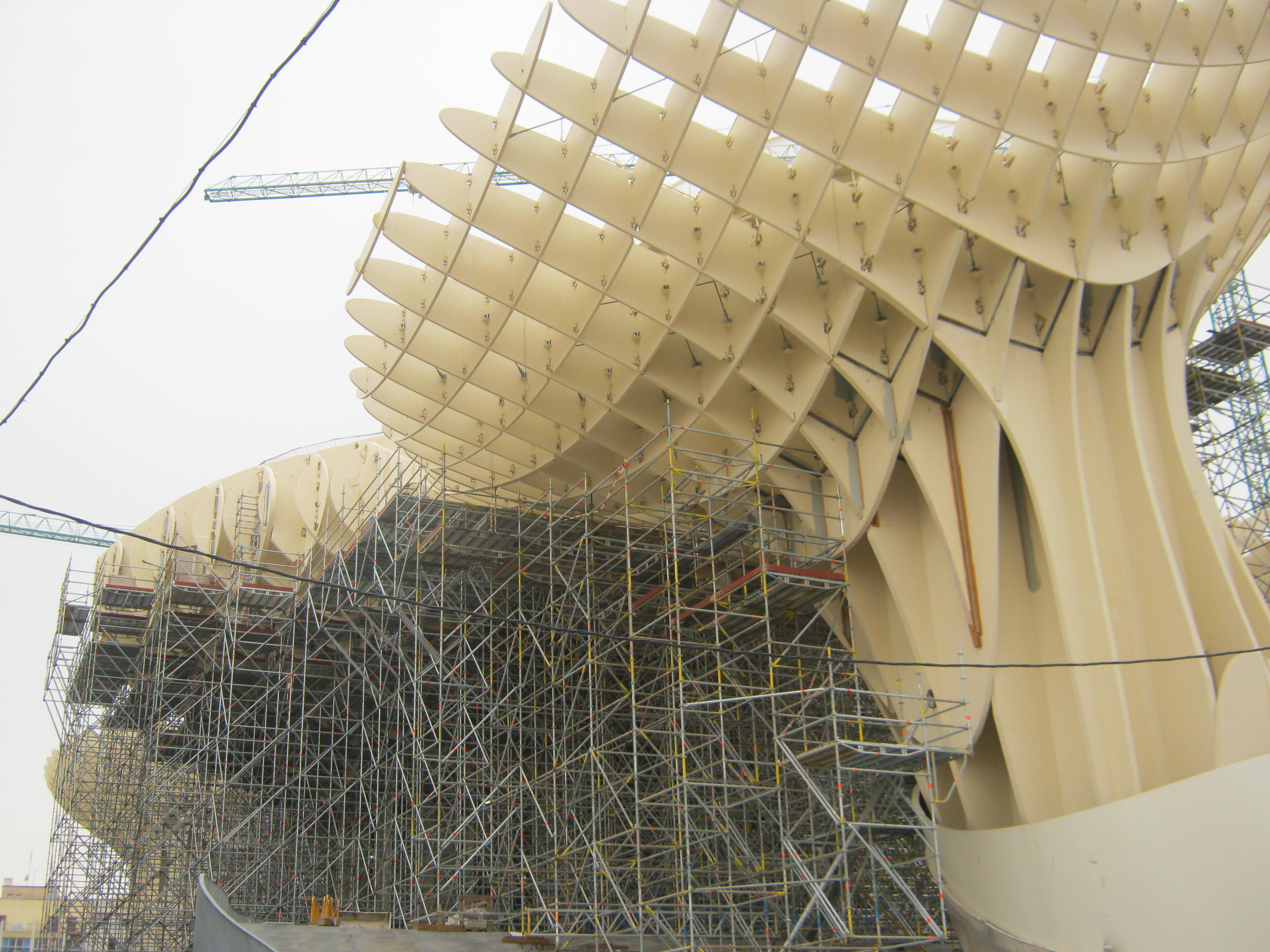

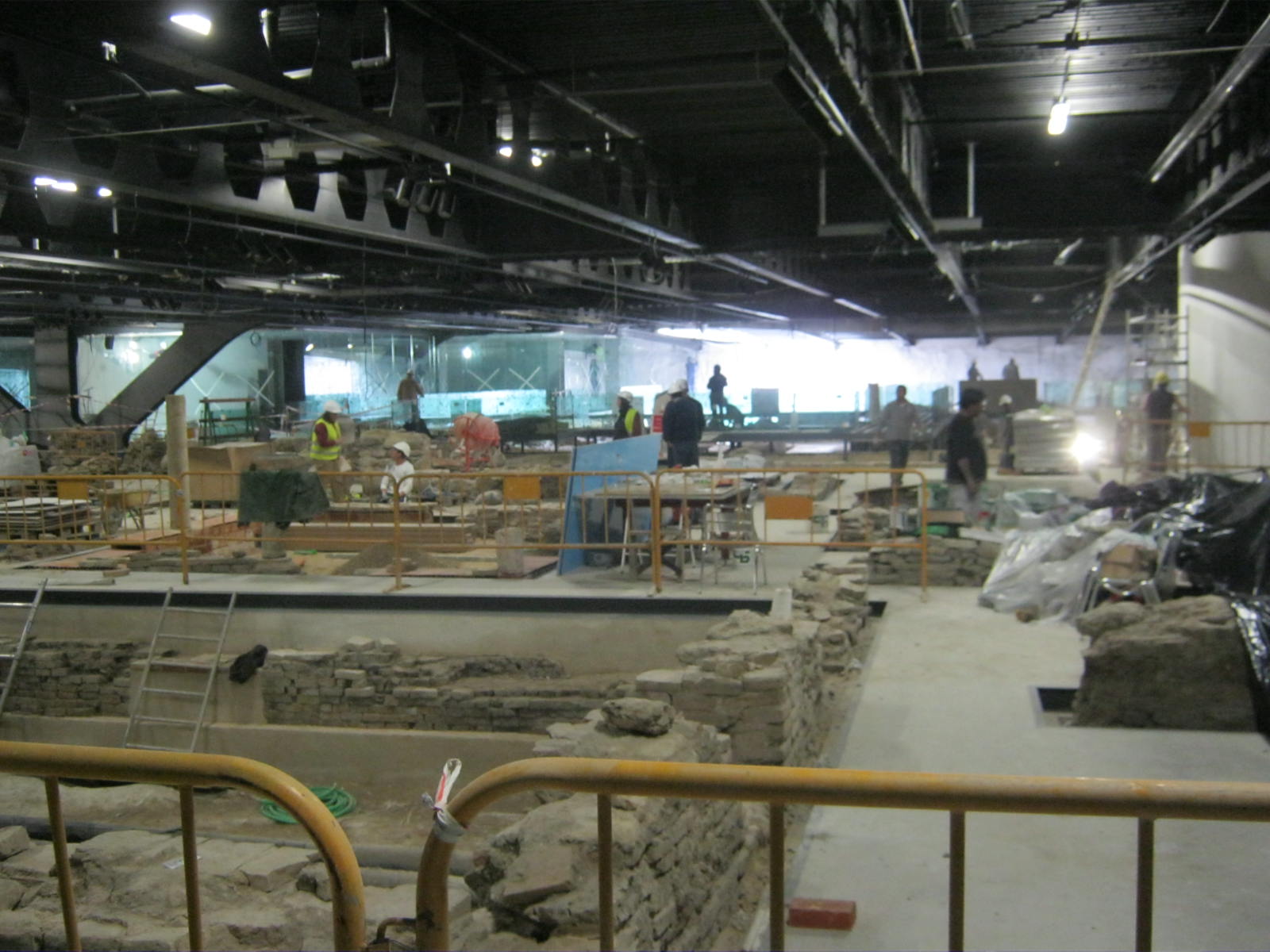
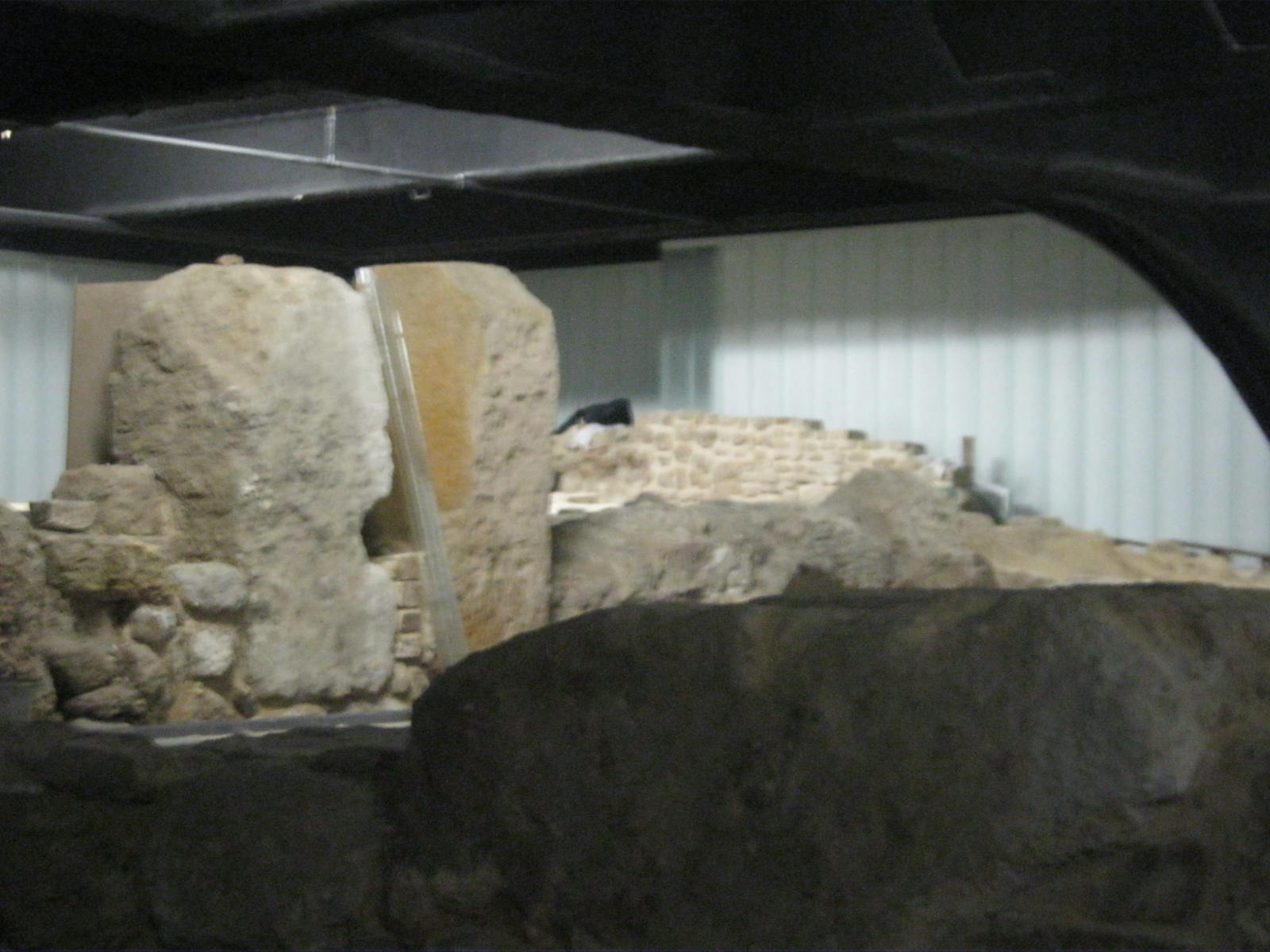

What an extraordinary, er, achievement!
How does this mesh with the surroundings? It looks like it must stick out like a sore thumb (rather like the appalling twisted metal shard they want to build next to London’s Olympic stadium).
I look forward to seeing pictures of it when it’s finished.
It doesn’t, Jon, at all. A design like this has its own identity and stands apart from all other buildings around it. It is for this reason (plus the massive expense) that it’s almost universally loathed here in Seville. And that’s exactly why I can’t wait for it to be unveiled and then see what people have to say about it.
I’ll do another post as soon it is finished – all the scaffolding taken off – and open.
That is one seriously impressive project, but one that I am sure could have been put on hold for a few years until these ‘austere times’ have passed.
Tumbit, when it was started, in 2006, times was good. It just took so long to finish, that now times is bad. They couldn’t leave it as it was, it was too much of a behemoth.